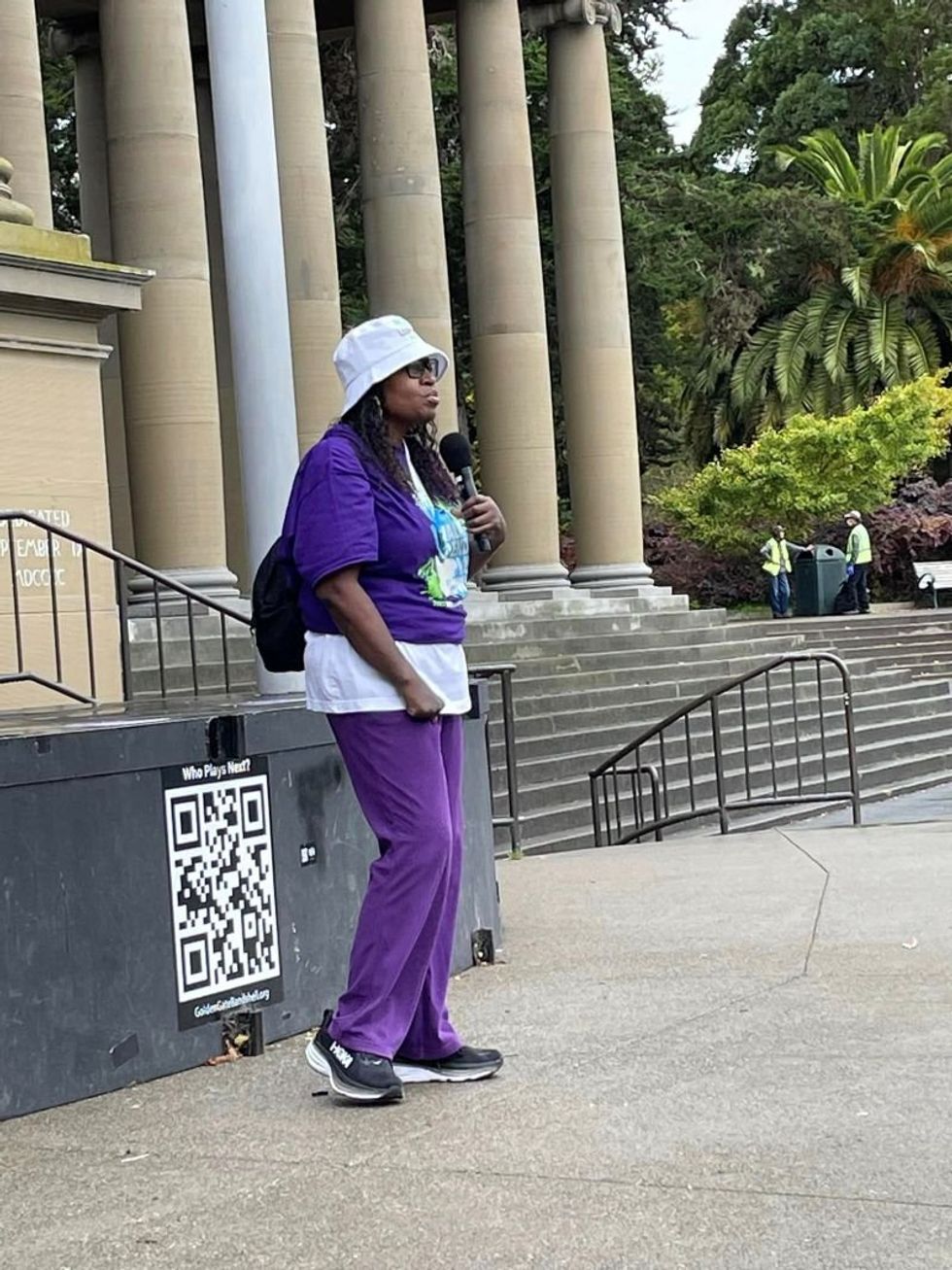As told to Marnie Goodfriend
I’ve always been a thrill seeker. At age 22, I wanted to experience life to the fullest, and I enjoyed snowboarding, traveling — and even bungee jumping. I was healthy and had never had anything more than a cold until I started experiencing extreme fatigue, joint pain, and swelling in my legs, feet, hands and arms. Walking, resting or standing was difficult, and I could no longer grip things. After a few weeks, the pain became excruciating, so I went to my doctor to get to the bottom of it.
The physician barely looked at my body and didn't run any tests. They gave me ibuprofen and told me to return if the pain persisted. Missing days from work was causing financial strain, and the pain just kept getting worse. The doctor I saw didn’t investigate the root cause of my condition. Instead, they upped my medications to heavy-duty painkillers. Two months later, I had no relief and was forcing myself to go to work.
One day, the pain became too much. I passed out and fell out of my desk chair at work. At the emergency room, I had no idea that my body was shutting down on me. They wanted to release me, but my mother and godmother demanded they keep me overnight and run tests. I was shivering with a 104-degree fever and having trouble breathing. They finally admitted me, and I was diagnosed with pericarditis (inflammation of the membrane that surrounds your heart) and pneumonia. And they ran an ANA test, which helps detect autoimmune disease. On my 23rd birthday, the ANA test came back positive. Based on that information and my symptoms, I was diagnosed with lupus.
I was isolated at the hospital for over a month on high doses of steroids while trying to process having a debilitating disease that can be life-threatening. A high school friend had lupus, and I had seen that it was horrible for her. I worried that I was going to die. It was difficult to wrap my head around how to live a new normal, make serious changes to my life that I had never even considered and grieve all the things I’d never get to do. It was a blessing that I had been with my company for years and could take a leave of absence. My friends and co-workers were a huge source of support, but my mother was and continues to be my rock. My first nephew was also born then, which gave me the strength to keep moving forward.
Once I was discharged, I moved in with my mom and went into a state of depression. All of the medication, pain, doctor’s visits and physical therapy were a lot to take in. Seeing that I was experiencing intense emotions, my rheumatologist encouraged me to see a therapist and connected me with a support group for lupus warriors. That’s where I found my people and learned from their experiences with the disease, which completely changed my perspective. My mom became my full-time caregiver without hesitation. I know it hasn’t been easy for her, and I carry some guilt and sadness that she’s had to take care of me as an adult when it should be the other way around.
For two years, I continued to work but took leaves of absence when my symptoms worsened. Then, my high school friend died from complications from lupus, and I developed lupus nephritis (kidney lupus). Without that support system, I would have believed that would also be my fate. Instead, I invited a few friends to participate in the Lupus Foundation of America’s (LFA) Lupus Walk in San Francisco. Being in a space where thousands of people know what you’re going through and you are supported by family, friends, coworkers, sponsors and volunteers was empowering. It inspired me to say, “I am not going to let lupus beat me,” so I became a volunteer for the organization, which helped me turn my pain into purpose.

Lupus is an unpredictable, incurable disease, and at the time I was diagnosed, there weren’t medications specifically developed to treat it. I built a team of healthcare providers (HCPs), from nephrologists to nutritionists to therapists, to help me manage its many symptoms. I also learned to become my own health advocate and find new HCPs when others weren’t providing adequate care. Throughout this time, I continued working my full-time job but was laid off and became a contract worker when I was in my early 30s. Losing my company health insurance was a blow because I then had to pay most of my medical bills. At the same time, I had a lupus flare, which is when the disease attacks an organ or system in your body. That time, it was my gastrointestinal system, and I lost 100 pounds in less than six months. I was surviving on rice, water and oatmeal. The rapid weight loss caused muscle atrophy and extreme weakness.
I had another terrible flare during the pandemic. I had a new permanent job that I loved when I started feeling fatigue creep in. I couldn't walk from my desk to the bathroom and always felt cold. I could barely lift my head at times and walking, sitting — everything — hurt it. My HCP’s office told me I needed to see my provider immediately because my weekly lab tests showed that I was in danger. I didn’t want to leave work, but they had also reached out to my father, who rushed me to the hospital. I had severe anemia. As a result, I received two blood transfusions and was hospitalized again for over a week. While recovering at home, I began to lose my ability to move and could no longer take care of myself. It was a fight for my life: I couldn't bathe myself. I needed help getting to the bathroom. I lost my ability to walk and had to relearn through intense physical therapy. I’ve been unable to work and have been on disability ever since.
Lupus can be a very lonely disease. You don’t want people to pity you. I remember people asking me, “Are you going to die? Is lupus contagious? Is it like AIDS?” So, you minimize the disease because people’s words can hurt, and you don’t want to be a burden to your support system. Your pain may be at a 10, but you will tell someone you’re at a six. You may need help walking but don't want to ask for it. Since lupus is primarily an invisible illness, people will say you don't look sick, even when, internally, you’re on fire. This isolation is why I’m committed to making lupus more visible by working as an ambassador and advocate and speaking to pharmaceutical companies and legislators about funding and support. One of my greatest accomplishments was becoming LFA’s Bay Area Lupus Support Group facilitator, creating a safe space for lupus warriors to be educated about lupus, share information and resources, and be heard — because that was life-changing to me, especially early in my diagnosis.
Today, I know I can live a full life with lupus, and I want others to know that as well. You can still thrive and enjoy yourself. I’m passionate about activities like my book club, music concerts and food tours. While I had to mourn not becoming a mother, my three nephews are such a light in my life that I can pour so much love into them. Spending time with my family and being an auntie are the greatest joys in my life. My faith has been tested, but I pray and trust in God. It is the most important thing in my life that has kept me strong throughout my lupus journey.
This educational resource was created with support from GlaxoSmithKline, Merck and Novartis.
Have your own Real Women, Real Stories you want to share? Let us know.
Our Real Women, Real Stories are the authentic experiences of real-life women. The views, opinions and experiences shared in these stories are not endorsed by HealthyWomen and do not necessarily reflect the official policy or position of HealthyWomen.
- Tichina’s Most Important Role ›
- Clinically Speaking: Importance of Clinical Trials in Lupus Research ›
- What It's Like in the Depths of Sickness with Lupus ›
- Why Are Women of Color More at Risk for Lupus? ›
- Lupus is A Cruel Disease — But Through Living With it, I've Found Balance and Grace ›
- Living with Lupus ›
- The High Cost of Living with Lupus ›


![Tracy en la Walk to End Lupus Now [Caminata para eliminar el lupus ahora] de Lupus Foundation of America](https://www.healthywomen.org/media-library/tracy-en-la-walk-to-end-lupus-now-caminata-para-eliminar-el-lupus-ahora-de-lupus-foundation-of-america.jpg?id=59842070&width=600&height=400&quality=85&coordinates=0%2C72%2C0%2C72)



